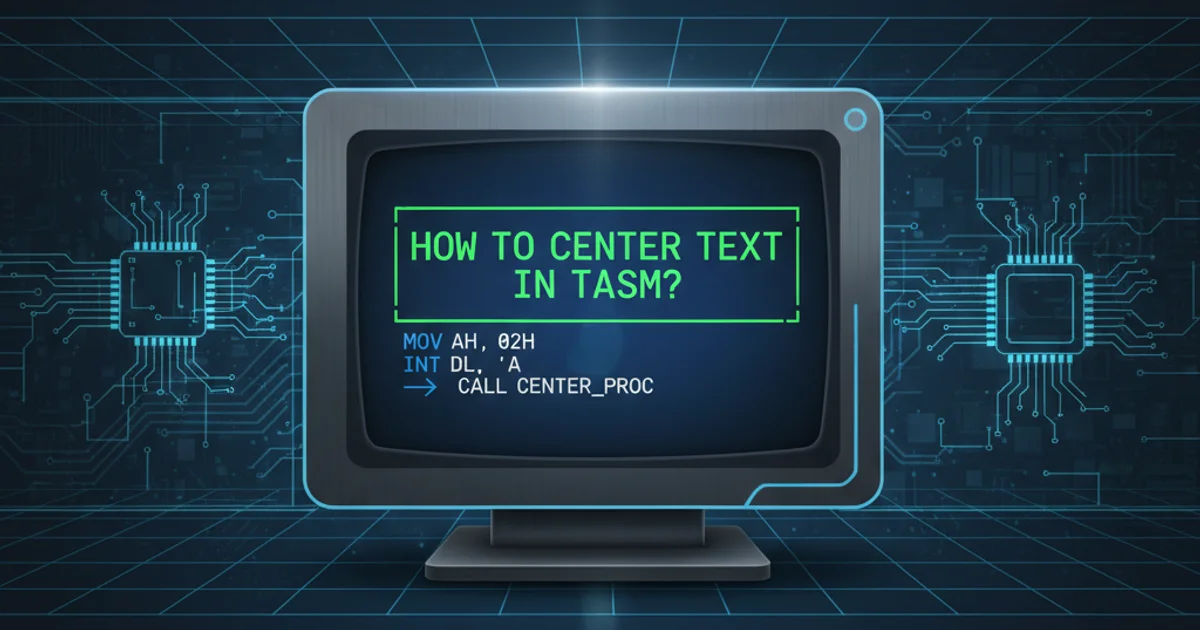How do I prevent and/or handle a StackOverflowException?
Categories:
Preventing and Handling StackOverflowExceptions in .NET

Learn how to identify, prevent, and gracefully handle StackOverflowExceptions in C# and .NET applications, focusing on common causes and best practices.
A StackOverflowException is a critical runtime error in .NET applications that occurs when the execution stack overflows. This typically happens due to excessive recursion without a proper termination condition, or in rare cases, extremely deep method call chains. Unlike many other exceptions, StackOverflowException is often unrecoverable and can lead to immediate application termination. Understanding its causes and implementing preventative measures is crucial for robust application development.
Understanding the Call Stack
Every time a method is called in a program, a new 'frame' is pushed onto the call stack. This frame contains information about the method's local variables, parameters, and the return address. When the method completes, its frame is popped off the stack. The call stack has a finite size. If too many method calls occur without returning (e.g., in an infinite recursion), the stack will eventually run out of space, leading to a StackOverflowException.
sequenceDiagram
participant A as Main Method
participant B as Recursive Method
participant C as Recursive Method
participant D as Recursive Method
A->>B: Call(1)
B->>C: Call(2)
C->>D: Call(3)
Note right of D: ... many more calls ...
D-->>X: Stack Overflow!Illustration of a recursive method call leading to a Stack Overflow
Common Causes and Prevention
The most frequent cause of a StackOverflowException is uncontrolled recursion. This can manifest in several ways, including direct self-recursion, indirect recursion (Method A calls B, B calls C, C calls A), or property setters/getters that inadvertently call themselves. Other less common causes include extremely deep method call chains, though modern compilers and runtimes are optimized to handle deep but finite stacks.
StackOverflowException with a try-catch block is generally ineffective and strongly discouraged. The .NET runtime converts StackOverflowException into a 'corrupted state exception' (CSE) which cannot be caught by user code by default. Even if caught, the application's state is likely compromised, making recovery impossible.Strategies for Prevention
The best approach to StackOverflowException is prevention. This involves careful design and review of recursive algorithms and property implementations.
1. Implement Base Cases for Recursion
Ensure every recursive function has a well-defined base case that terminates the recursion. Without a base case, or if the base case is never reached, the recursion will continue indefinitely.
2. Limit Recursion Depth
For algorithms that might involve deep recursion, consider adding a depth counter as a parameter. If the depth exceeds a safe limit, throw a custom exception (e.g., MaximumRecursionDepthExceededException) instead of allowing a StackOverflowException.
3. Refactor to Iteration
Many recursive algorithms can be refactored into iterative ones using loops and explicit data structures (like a stack or queue). This eliminates the risk of stack overflow entirely.
4. Guard Property Setters/Getters
Be cautious with properties that call other properties or methods. Ensure that a property's setter does not directly or indirectly call itself, and similarly for getters.
public class MyClass
{
private int _myProperty;
public int MyProperty
{
get { return _myProperty; }
set
{
// INCORRECT: Causes StackOverflowException
// MyProperty = value;
// CORRECT: Assigns to the backing field
_myProperty = value;
}
}
// Example of controlled recursion
public int Factorial(int n, int depth = 0)
{
if (depth > 1000) // Arbitrary safe limit
{
throw new InvalidOperationException("Maximum recursion depth exceeded.");
}
if (n == 0) // Base case
{
return 1;
}
return n * Factorial(n - 1, depth + 1);
}
}
Examples of property setter correction and controlled recursion with a depth limit.
Special Case: XSLCompiledTransform
In some specific scenarios, particularly with XSLCompiledTransform in .NET, complex XSLT stylesheets can generate very deep call stacks during transformation, leading to StackOverflowException. This is often due to recursive templates or deeply nested XML structures being processed. While the general prevention strategies apply, sometimes the XSLT itself needs optimization.
XSLCompiledTransform and potential stack overflows, consider simplifying your XSLT, breaking down complex transformations, or using iterative approaches within the XSLT where possible. Increasing the stack size for the application's thread is a last resort and often masks underlying design issues.